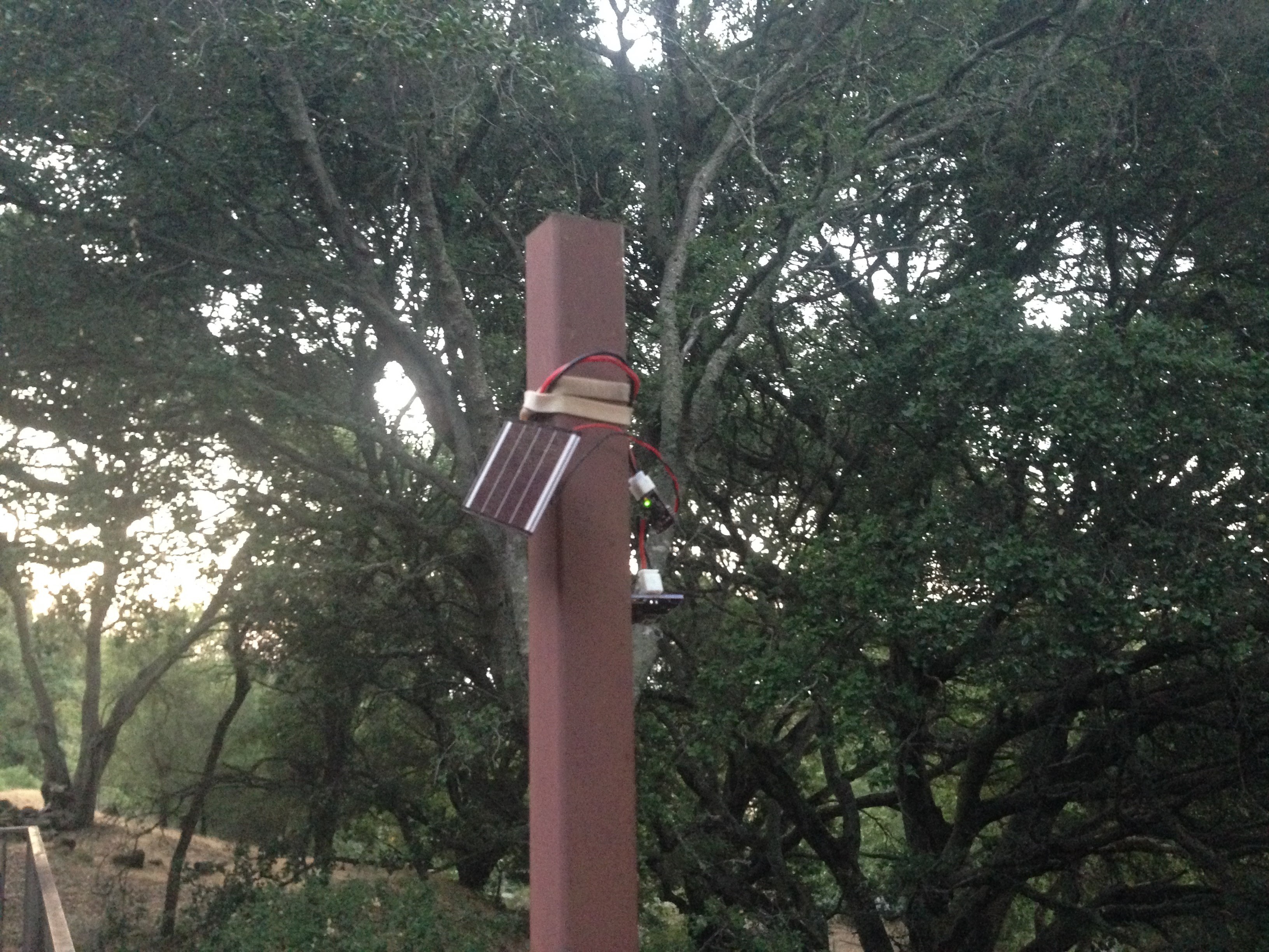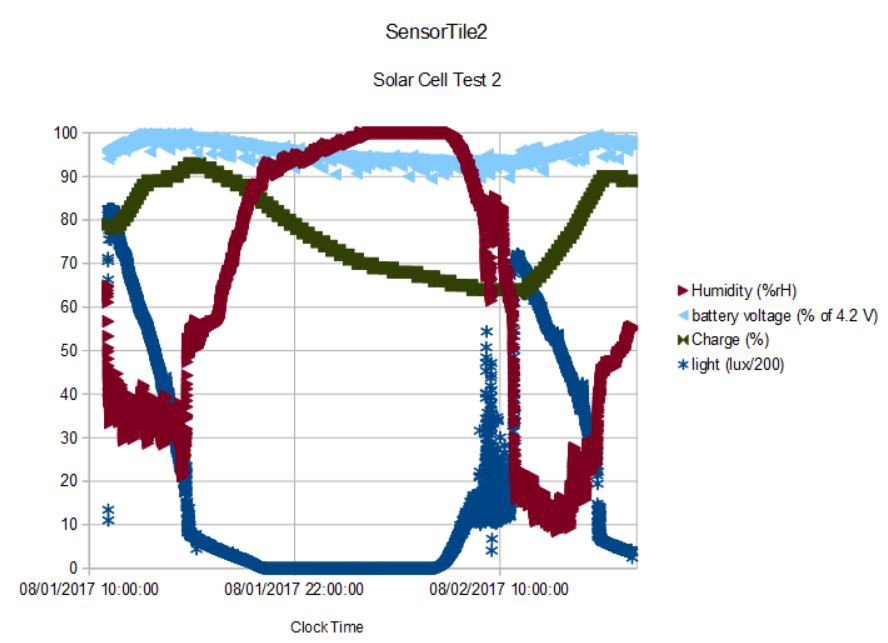8/11/17
First attempts to use the solar cell charger outside were not entirely successful. This time of year we have high humidity and fog in the evening and this is interferring with one or more of the sensors on the SensorTile2. In the first attempt, I placed the SensorTile2 on a pole with the solar cell facing the sun:

You can see the green "Battery OK" led of the BQ25504 charger and the SensorTile2 hanging below it. You can also see it is overcast and not too sunny. The fog rolls in after sunset and the humidity rises...it rises so much that the humidity sensor reached saturation (got wet in fact) and the SensorTile2 simply stopped working.
The second attempt was a little more successful. I placed the SensorTile2 on a black side "table" of our barbeque with the solar cell angled to face South and more or less get the full sun from ~11 AM to ~4:45 PM. I put a glass bowl over the whole shebang after sunset to try to protect it against dew formation, which sort of worked. But the air quality sensor stopped working the first evening so I ended the experiment after two days. This is the result:

I did some scaling so everything of interest would fit on the same plot. You can see that the humidity saturates after midnight; somehow almost everything kept working into the next day.
The ambient light was measured (using the highest-range setting of the VEML6040 == 40 ms integration time) to be ~15 klux at the peak. This measurement isn't really representative of what the solar cell sees since the SensorTile2 is not at the same orientation and, in fact, gets oblique sunlight for most of the ~6 hours of direct sun exposure. I might try to orient them more closely on the next experiment to get a better measure of incident light on the solar cell.
Even at 15 klux the solar cell should be producing (15/50) x 17 mA or ~5 mA, which with ~6 hours of sunlight is ~30 mAH per 24 hour cycle. Since the device is using ~1.8 mA x 24 hours = 43 mAH per day, and the 15 klux is likely an underestimate of what the solar cell sees, this arrangement is getting close to self-sustaining. In fact you can see that the charge level measured by the MAX17048 and the battery voltage measured by the voltage divider and STM32L432 ADC both return to their maxima after the second day.
I need to repeat this experiment when the weather becomes a bit drier (which will happen soon enough). I also redesigned the SensorTile2 to replace the 1 MByte SPI flash with an 8 MByte SPI flash so I will be able to record data for ~24 days at the current (0.1 Hz) rate. Looks like, if I can keep the SensorTile2 dry, I should be able to capture a lot more data with the help of the solar cell...
 Kris Winer
Kris Winer
Discussions
Become a Hackaday.io Member
Create an account to leave a comment. Already have an account? Log In.